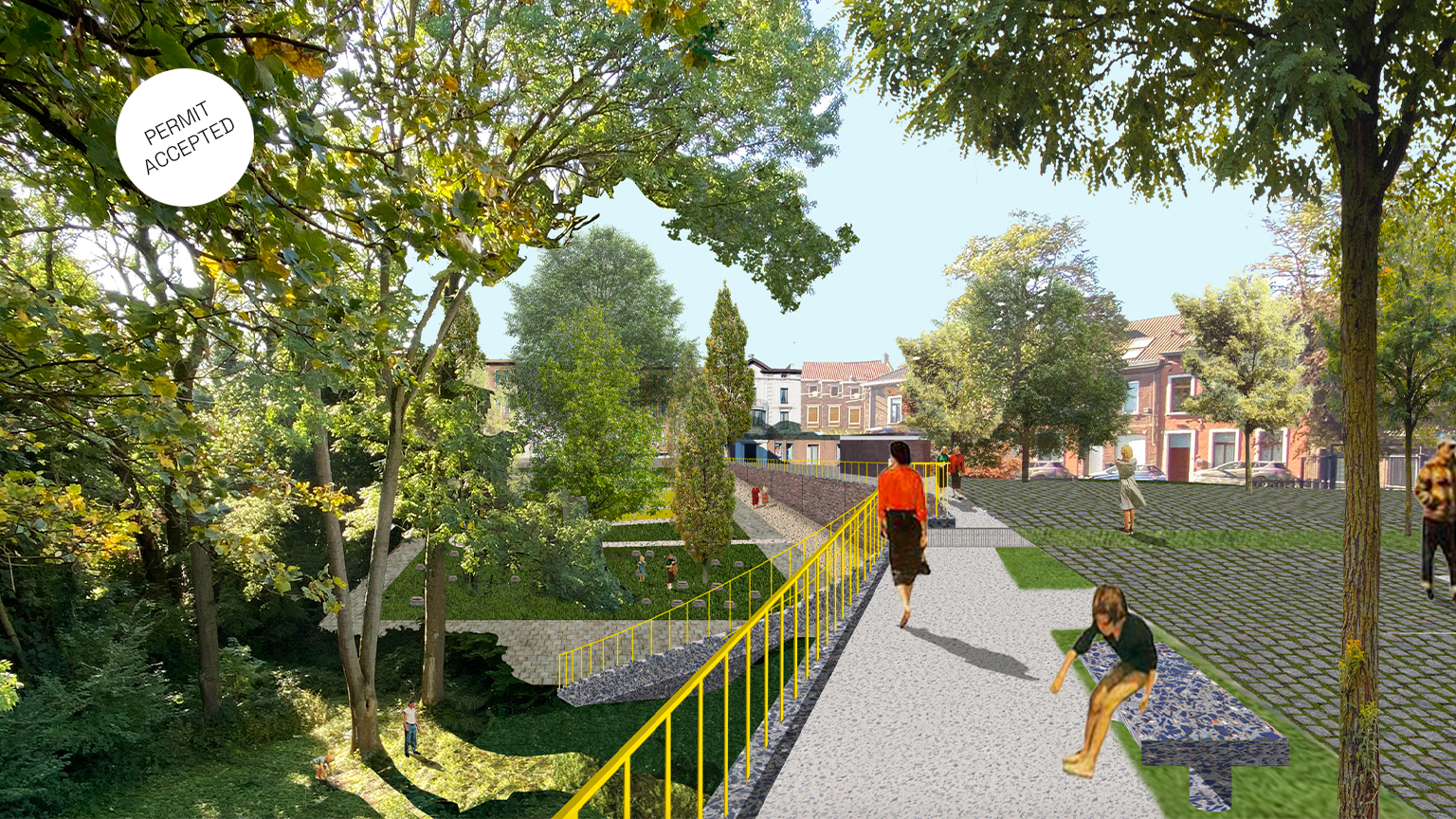
Typology |
Territorial Practices |
Program |
Public Space |
Location |
BE |
Year |
2026 |
Status |
In Progress |
Budget in € |
2 000 000 |
Size in sqm |
5 000 |
Selection Process |
Advertised Tender |
Client |
Ville de Charleroi |
Partner Office |
Bloc paysage, Belemaire, Atelier Moneo, Jeudy Codives |
Team |
Julien Deloffre, Jan Geks |
Edmond Gilles
: Public Space SequenceAt the heart of the design is the ambition to reinforce Place Edmond Gilles as a central and historic urban nucleus, while addressing the needs of all users of the public realm. The project defines a clear spatial organization of mineral and vegetated zones, structured and open spaces, as well as more intimate areas. Accessibility, integration of heritage, conviviality, and opportunities for play, rest, and social encounters all guided the conceptual development.
Read moreThe proposal is built around several key principles: to valorize the square as a civic and historical center, to integrate the needs of all actors, to redefine the square as a continuous and coherent public space, to reconnect it with the wider network of open green spaces in the neighborhood, and to organize circulation flows in a balanced and sustainable way.
The redefined Place Basile Parent strengthens its role as the heart of the commune by supporting existing activities—particularly horeca, education, and culture, while encouraging new forms of collective appropriation. The square is envisioned as a flexible, open space capable of hosting diverse uses over time: from daily encounters and terraces to seasonal events such as markets, concerts, or fairs.
A first gesture is to reorient the square towards the communal park, made possible by the planned demolition of the church. This intervention integrates the square into a sequence of green spaces, extending the boundaries of the park into the heart of the town through new planting schemes and pathways. Visual and physical connections between park and square are reinforced, enhancing the site’s landscape qualities. Conversely, a new architectural element along the busy Châtelet road clearly defines the square’s perimeter, serving both as a spatial boundary and as an active urban interface.
The design establishes two complementary atmospheres. On the square side, a façade-to-façade treatment with continuous paving enlarges the usable surface and creates a fluid, flexible space. On the park side, the design embraces topography and vegetation, extending the park into the square through planted areas, seating, and stabilized surfaces that can host varied programs. Parking is relocated along the southern edge, screened by dense planting of tall trees that provide both shade and visual separation.
Mobility and accessibility are addressed through a reasoned reorganization of traffic. Car dominance is reduced, with new parking concentrated near the park and circulation slowed on surrounding streets. A school forecourt is pedestrianized to ensure safety for children and families, while selective local access is maintained for residents and businesses. The uniform surface treatment favors pedestrians, cyclists, and people with reduced mobility, restoring the square as a true civic heart.
Finally, a major urban element the “gradin” is introduced along the Châtelet road. This stepped structure plays a double role. Towards the road, it acts as a protective buffer and integrates a bus stop, providing shelter and serving as a signal for the square. Towards the square and park, it becomes a large south-facing seating landscape: a place for daily rest, play, and informal gathering, as well as for concerts and public events. By reshaping the edge condition, the gradin redefines the limits of the square while opening it to new uses and perspectives.
Read less




